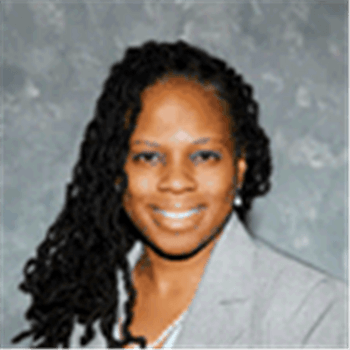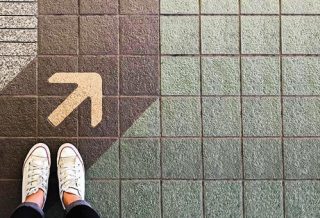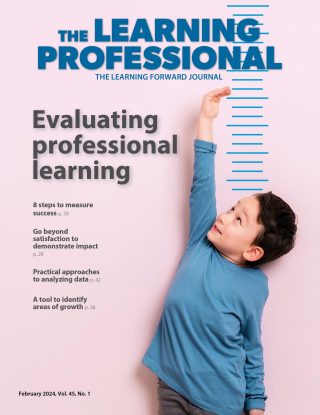FOCUS
A standards-driven culture of learning thrives at Georgia high school
By Nia Thornton
Categories: Collaboration, Continuous improvement, Data, Evaluation & impact, Fundamentals, Implementation, Leadership, Learning systems/planning, School leadership, Standards for Professional Learning, Teacher leadershipJune 2022
When I became an assistant principal at Central Gwinnett High School in Georgia seven years ago, part of my charge was to lead professional learning for our school staff. The other members of the leadership team and I were ready to engage our staff in meaningful, day-to-day learning. We knew that our work needed to be rooted in current research and best practices to get buy-in and engage all staff.
Learning Forward’s Standards for Professional Leaning provided a framework for doing just that. The standards have given us a foundation for visualizing, planning, and monitoring our professional learning efforts, and they have become part of the culture of learning at the school.
At the school level, standards play key roles in visualizing, planning, and monitoring professional learning. #Stand4PL Click To TweetIn Gwinnett County Public Schools, schools develop annually a local school improvement plan that is aligned with district priorities and is also responsive to local needs. The district, the largest in Georgia, includes 141 schools.
Central Gwinnett High School serves about 2,500 students in grades 9-12. At that scale, it’s not surprising that we have a great deal of diversity across our schools and variation in students’ needs. The local school improvement plan is key to meeting those needs, with support from and alignment with the district central office and other schools.
Using data to set goals
At Central Gwinnett, we see the school improvement plan as inseparable from our professional learning plan, so we ground it in Standards for Professional Learning. Each spring, we examine several types of data to assess our students’ and school’s needs.
Based on that, we develop specific goals, design implementation steps to meet those goals, and establish monitoring and evaluation steps so we can assess progress and make course corrections. We can’t achieve the goals without a clear implementation design in place, and the focus of that plan is capacity building for teachers and staff so that all the educators in the building will know what to do, how, and why.
Throughout this process, the standards play several roles. In our data review, we use results from the Standards Assessment Inventory (SAI), Learning Forward’s tool for educators to assess how well their systems are addressing each of the standards in their professional learning efforts. (See box below.) These results help us understand areas of strength and challenge in our support for teachers.
We then look to the standards to guide the professional improvement plans and action steps we develop. This has helped us make professional learning more responsive to our staff’s needs as well as best practice.
For example, a few years ago, an in-depth examination of SAI data helped us see the need to structure capacity building differently and ultimately led us to change our master schedule to prioritize collaborative professional learning.
At that time, a lot of professional learning took the form of whole-group sessions in our school theater. Those of us who are passionate about professional learning wondered whether this was the best structure, but it wasn’t until we saw the SAI data that we realized teachers were wondering the same thing. The results showed that our educators preferred small-group settings for professional learning.
That stuck out to us so much that we changed our master schedule to accommodate standards-aligned, job-embedded professional learning, which we know is the most effective form of learning because it meets people where they are and allows things to play out in real time.
We restructured the schedule so that all teachers in core academic areas would have common planning time twice a week with others in their area. This planning time is set up so that course teams can engage in collaboration to determine what their students need.
In the past, teachers created identical lesson plans for the whole week, but now we foster collaborative learning. We facilitate conversations about the actions teachers need to take to get to the goals for students, the student outcomes they expect these actions to produce, and ways to know whether students have learned the material.
Building a culture of learning
To build this culture of collaborative learning, we use a trickle-down or train-the-trainer model. Each assistant principal meets regularly with the department chairs for one or two curriculum areas. Then we add the course team leads.
Those chairpersons and course team leads then develop the skills to act as facilitators during the common planning time. This approach to shared leadership, like the focus on collaborative learning, is aligned with and guided by Standards for Professional Learning.
The standards have also been helpful for engaging in team development work. When we restructured our schedule and our professional learning approach, we found that we needed to do some team strengthening to get buy-in from all staff. We knew we would be more successful if we rooted ourselves in what the research says about how team processes lead to student outcomes.
Sharing that body of research with our teachers and teacher leaders helped us gain support for the work. And as we move forward, when we hit bumps in the road to collaboration, such as educators taking feedback personally rather than constructively, we keep going back to the standards to recalibrate around our “why.”
It’s especially important now, as students and educators are coping with the stresses and setbacks of the pandemic, to keep revisiting our why, recalibrating around everyone’s evolving needs, and communicating the why and how to our educators. That includes not only current staff but potential recruits.
Our school has teacher vacancies we never filled this year, and vacancies going into the next school year, so recruitment and retention are major priorities. In our recruitment efforts, we emphasize the professional learning we offer and our commitment to growth and development.
Teachers are professionals, and they deserve to have the chance to grow in their careers. The beauty of our profession is the ability to learn and grow every day, and we are communicating that to our teachers and our new recruits.
A districtwide effort
It’s important to note that our school is not doing this professional learning work on our own. Across the 141 schools in the district, every school has a designated staff development contact person. We come together on a regular basis, at least once quarterly, to discuss best practice related to implementing, monitoring, and evaluating professional learning. The district Department of Staff Development facilitates these meetings and provides ongoing support and communication to encourage sustained, high-quality professional learning.
As we move forward with this work, we are excited about the recently revised standards, which are timely and responsive to the needs of schools like ours. The new standards align closely with our district priorities, especially around equity and rigorous curriculum. They will also help us recover from pandemic-related disruptions — for example, as we look to the Learning Designs standard to improve our differentiation.
The last two years have been like no other for educators and students. We are grateful to be able to lean on the layers of support and expertise embedded in Standards for Professional Learning. Developed by educators and for educators, we rely on them to support our teachers.
Download pdf here.
About the Standards Assessment Inventory
The Standards Assessment Inventory (SAI) is a web-based teacher survey that provides leaders with data on the quality of their professional learning as defined by Standards for Professional Learning. SAI results help schools and systems focus on the particular actions that contribute to higher-quality professional learning. The results can be used for improvement planning, benchmarking, evaluation, and reflection. When schools administer the SAI, Learning Forward helps leaders analyze results, identify areas for improvement, and help determine next steps.
Learning Forward is pilot testing and gathering feedback on an updated version of the SAI that is aligned to the revised Standards for Professional Learning. This updated version is scheduled for release in late 2022.

Nia Thornton (Nia.Thornton@gcpsk12.org) is an assistant principal at Central Gwinnett High School in Georgia.
Categories: Collaboration, Continuous improvement, Data, Evaluation & impact, Fundamentals, Implementation, Leadership, Learning systems/planning, School leadership, Standards for Professional Learning, Teacher leadership
Recent Issues
TAKING THE NEXT STEP
December 2023
Professional learning can open up new roles and challenges and help...
REACHING ALL LEARNERS
October 2023
Both special education and general education teachers need support to help...
THE TIME DILEMMA
August 2023
Prioritizing professional learning time is an investment in educators and...
ACCELERATING LEARNING
June 2023
Acceleration aims to ensure all students overcome learning gaps to do...











